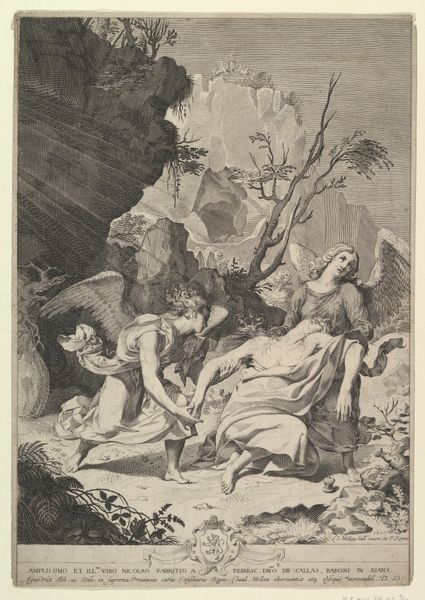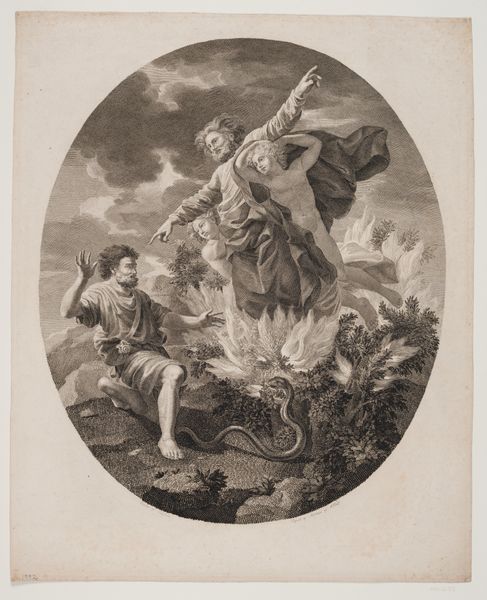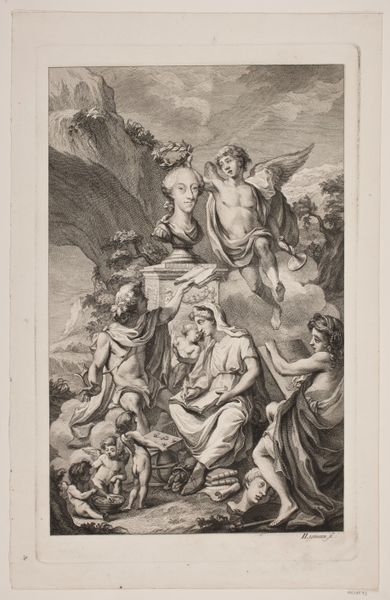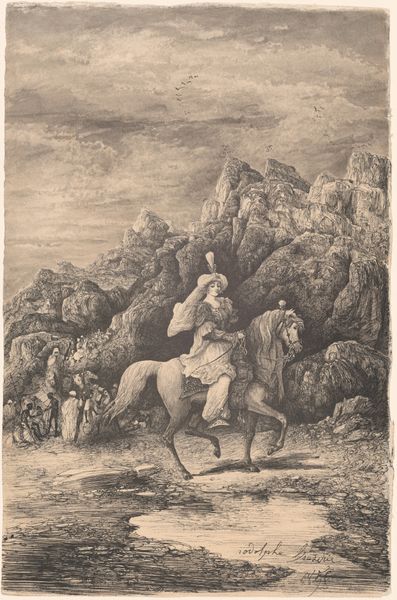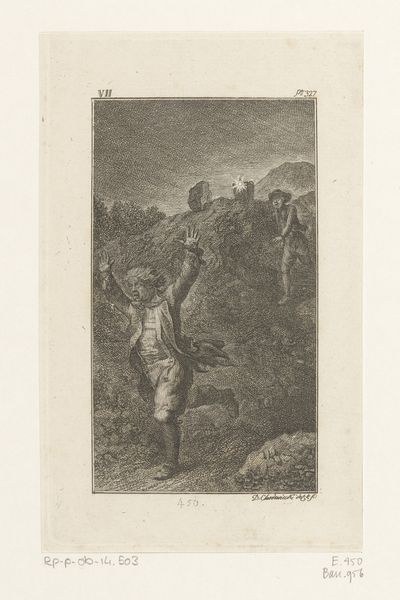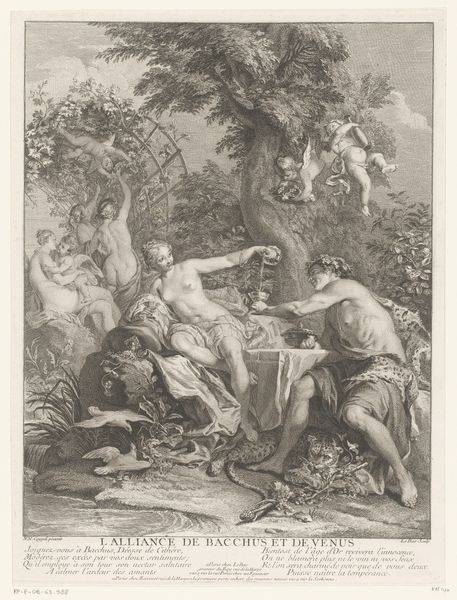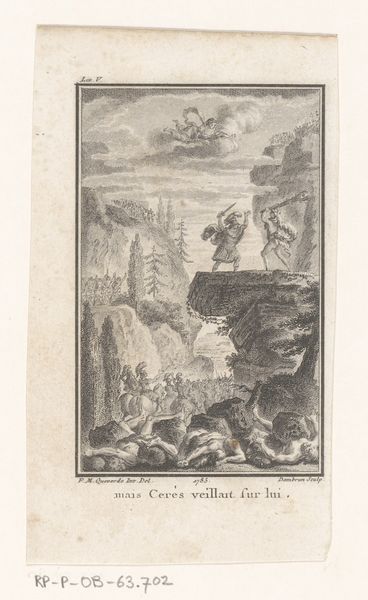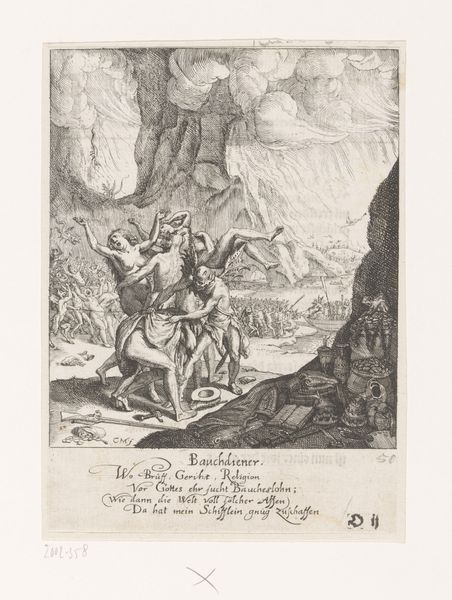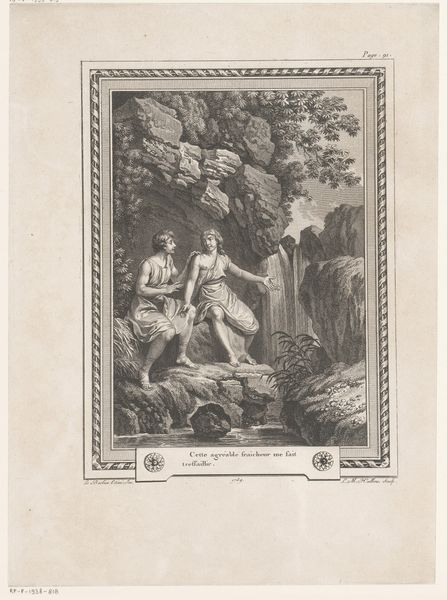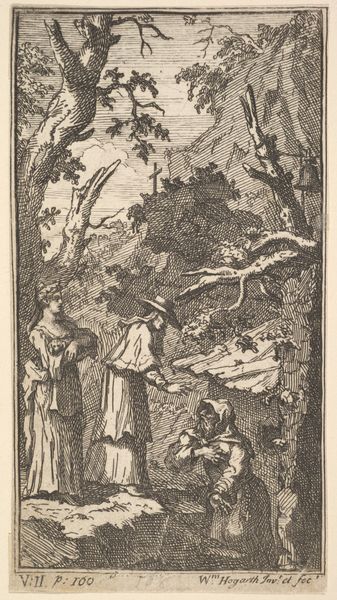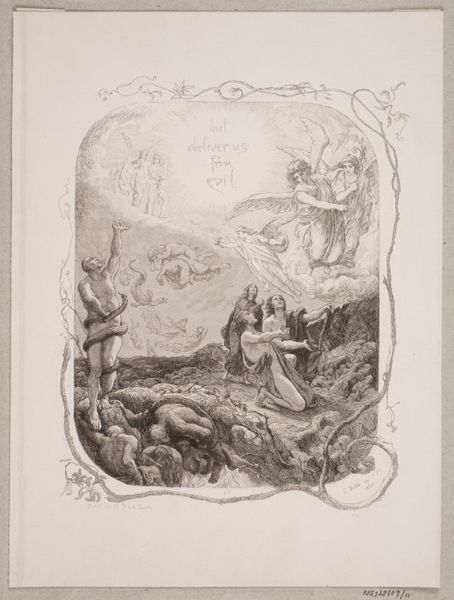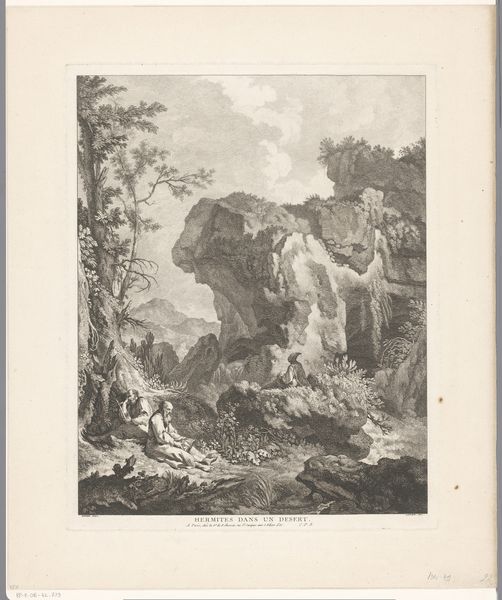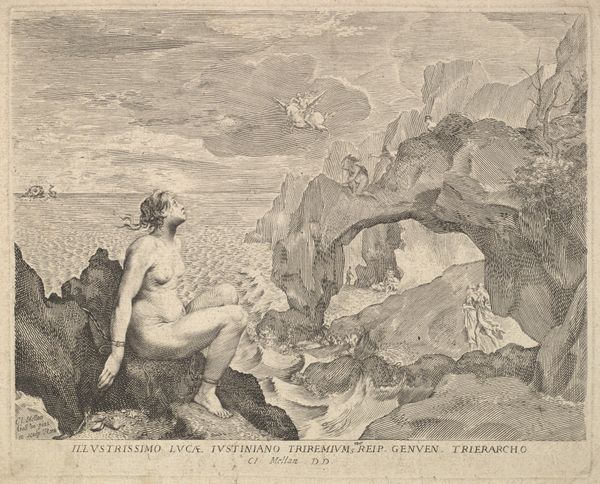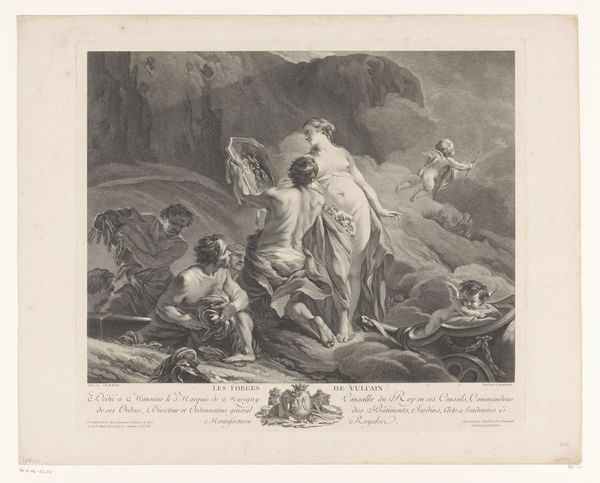
Dimensions: Plate: 12 11/16 × 9 3/16 in. (32.2 × 23.3 cm) Sheet: 13 5/16 × 9 5/16 in. (33.8 × 23.7 cm)
Copyright: Public Domain
Curator: A somber mood permeates this engraving, doesn't it? Let's delve into "The Bard" from 1784 by John Hall, currently residing at the Metropolitan Museum of Art. Editor: Indeed. There’s a certain roughness in the scene, amplified by what looks to be print work focused on expressive line rather than shading or fine detail. One feels a primordial connection to the materiality. Curator: Precisely. Hall's choice of engraving captures the dramatic spirit of Romanticism. Note how the lines sculpt form and suggest depth. The composition is powerful – the lone bard against the sublime landscape evokes a sense of human drama amidst a greater, wild history. Editor: Looking at the material process of creation, how does this choice to work with print limit or empower the message about Welsh history in relation to the materiality of other romantic painting of the same era? Did Hall engrave his own plates? Or did he contract the work to other print shops? That’s essential information! Curator: Irrespective of its exact production, Hall emphasizes the sublime and the role of the artist as visionary, removed from worldly concerns. We see that translated into his choices for the piece's compositional form, which frames the bard between dark cliffs and storm-tossed water to evoke awe. The line, as a formal device, amplifies it, creating visual agitation, which complements the historical context. Editor: What type of press was used for pulling? The surface texture and ink type feel central here too, right? Consider, if you will, the socioeconomic standing of a family who would’ve purchased such an image for their collection… Does owning a print like this alter their social standing or perceptions? Curator: I believe the true value lies in its depiction of an isolated, heroic figure standing in opposition to the brutality of invasion. How he, and others like him, become guardians of their native history. What better format to distribute this tale than engraving and printmaking? Editor: To be certain, the layering of physical realities like social access with historical narratives makes art like this extremely pertinent for our discussions of craft and society even today. Curator: I agree; studying form and intent in harmony unlocks those larger truths for all of us.
Comments
No comments
Be the first to comment and join the conversation on the ultimate creative platform.
